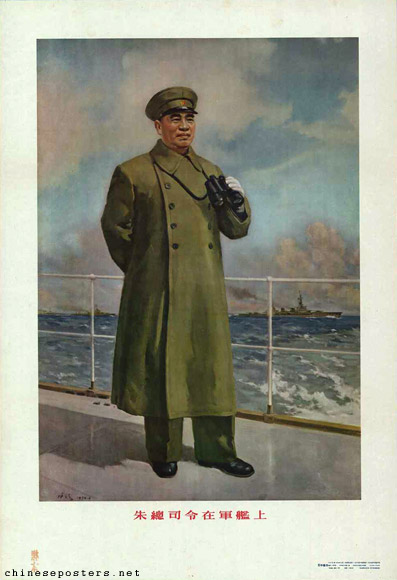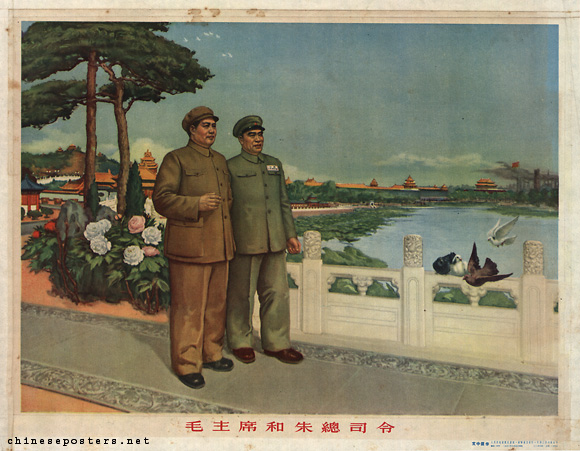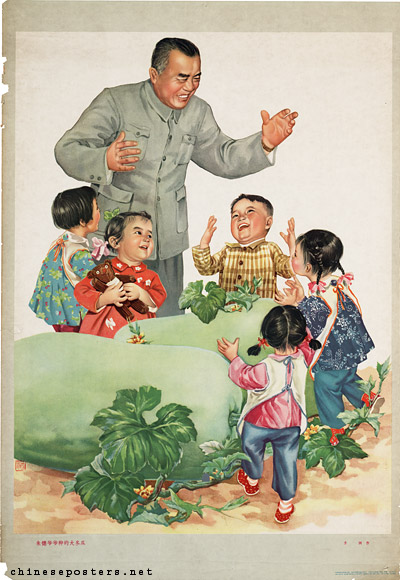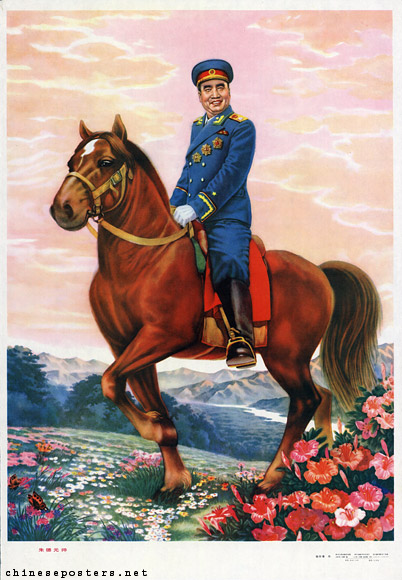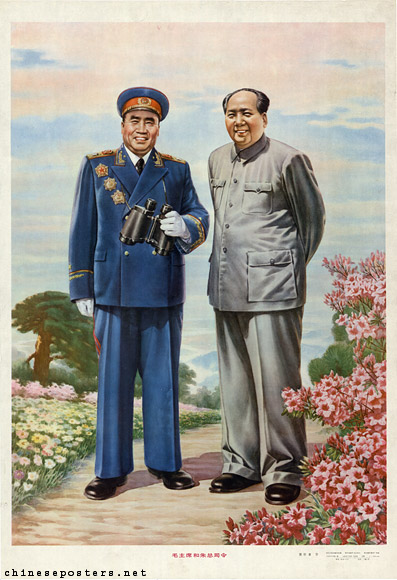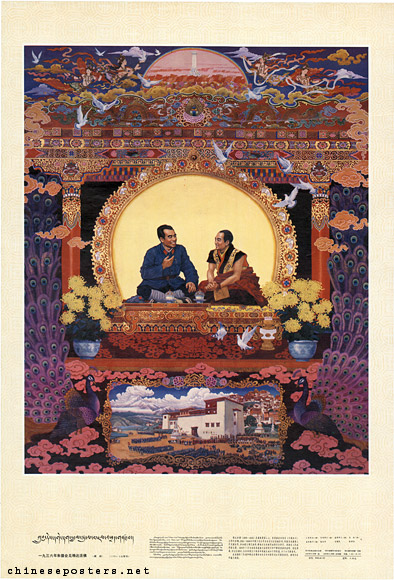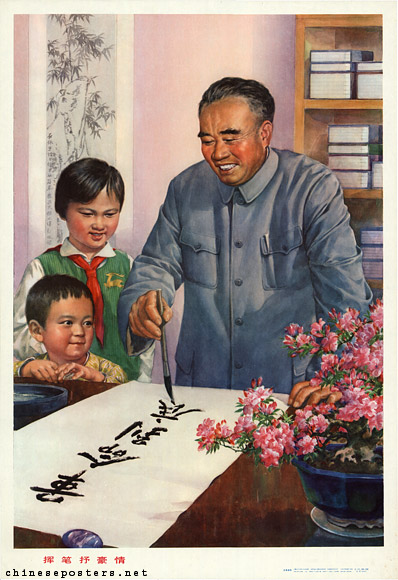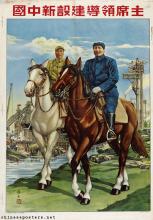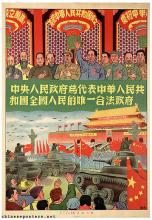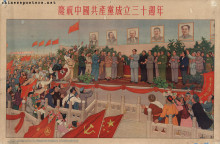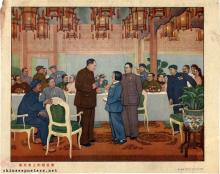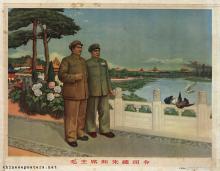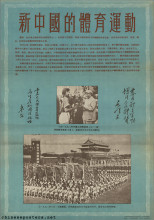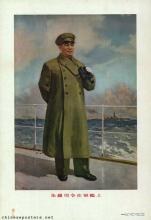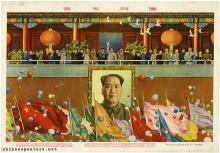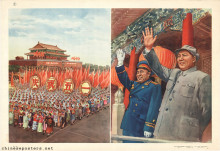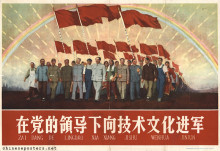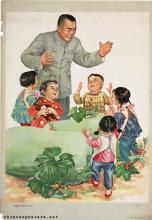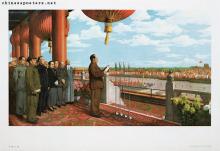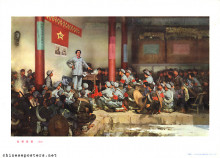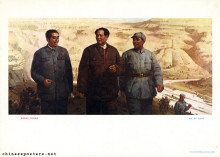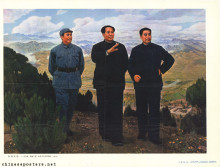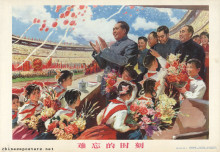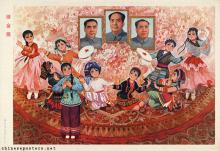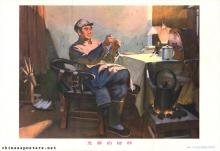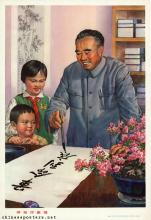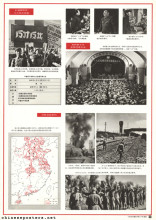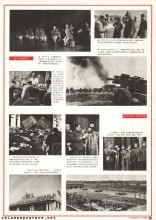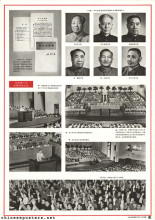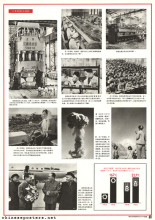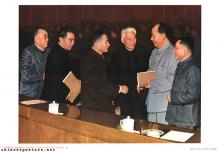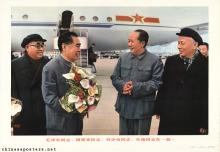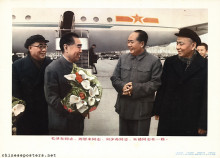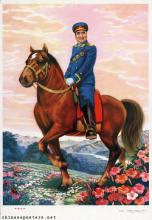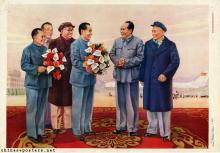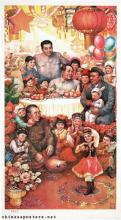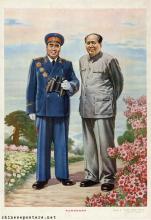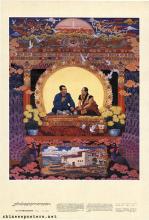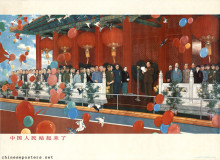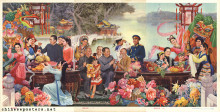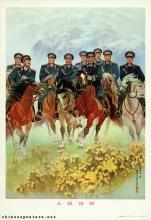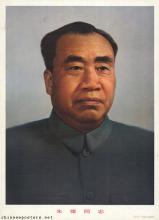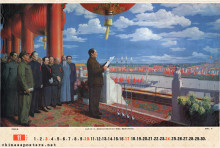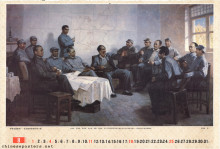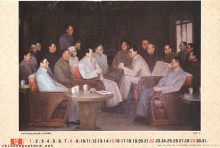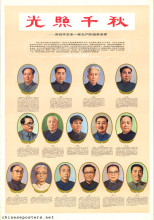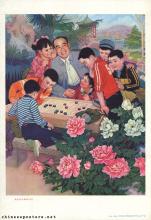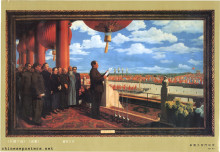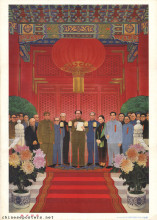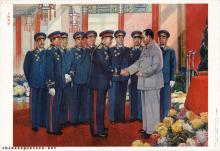Commander-in-chief Zhu on a naval vessel, 1954
Together with Mao Zedong, Zhu De (朱德, 1886-1976) formed the backbone of the Chinese Revolution. In the 1930s and 1940s, the Chinese Communist Party was known in China as the "Mao - Zhu (rebel) forces". Born in a poor peasant family, Zhu was nonetheless able to attain the traditonal title of xiucai (budding talent), thereby qualifying for a rank in the Imperial civil administration. After studying at a military academy, Zhu joined the ranks of the revolutionaries at an early age by joining Sun Yatsen's Guomindang. In 1922, he went to Paris, and travelled on to Berlin, where he met Zhou Enlai and joined the German Branch of the CCP. From 1924 until his expulsion from Germany in 1926, Zhu studied at Goettingen University. After his return to China, he served as commander in various Army units.
Chairman Mao and Commander-in-chief Zhu, 1953
In 1927, he participated with Zhou Enlai, Li Lisan and other early CCP-leaders in the abortive Nanchang Uprising. After this failed, he led the remnants of his troops eventually to Jinggangshan, where he joined forces with Mao Zedong. There, the 4th Red Army was formed, with Zhu as commander and Mao as political commissar. In the Jiangxi Soviet, Zhu also started his career as a CCP-leader by joining the Central Committee. After the Long March and the arrival of the revolutionary forces in Yan'an, Zhu was made commander of the 8th Route Army. Subsequently, he became Commander-in-Chief of the People's Liberation Army in 1945.
The big winter gourd grown by grandpa Zhu De, 1962
Chairman Mao and Commander-in-Chief Zhu De, 1983
In 1955, Zhu was made a marshal of the PLA, together with such famous commanders as Ye Jianying, Peng Dehuai, He Long, Liu Bocheng and Lin Biao. Despite his immaculate career in the service of the revolution, Zhu was attacked by Red Guards during the Cultural Revolution (1966-1976) as a great warlord and an anti-Mao element.
The 1936 Meeting of Zhu De and Living Buddha Geda, 1983
After the conclusion of the Cultural Revolution and the fall of the Gang of Four, Zhu was rehabilitated. From that period on, he could be seen again, both together with Mao, and with Zhou Enlai and Liu Shaoqi, on the numerous posters dedicated to the first generation of leaders. As proof of his regained stature, one of the four memorial rooms that were added in December 1983 to the Memorial Hall where Mao's remains were on display was dedicated to Zhu.
Chen Yu (ed.), Zhonghua renmin gongheguo 36 junshijia [36 Strategists of the People’s Republic of China] (Shanghai: Shanghai wenyi chubanshe, 2002) [in Chinese]
Dachang Cong, When Heroes Pass Away - The Invention of a Chinese Communist Pantheon (Lanham MD: University Press of America, 1997)
Liao Yiwen (ed), Tian Lun [Family Love and Friendship] (Tianjin: Tianjin jiaoyu chubanshe, 1995) [in Chinese]
Rudolf G. Wagner, "Reading the Chairman Mao Memorial Hall in Peking: The Tribulations of the Implied Pilgrim", Susan Naquin & Chün-fang Yü (ed), Pilgrims and Sacred Sites in China (Berkeley: University of California Press, 1992)
